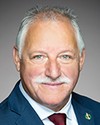Thank you very much, Mr. Chair.
I want to thank all the witnesses here today. It's extremely important to help us in this very important task of dealing with the backlog as efficiently and effectively as possible. I want to thank all of you for your contribution today.
I'd like to start with my colleague Mr. Giroux.
Thank you to you and your staff for the excellent work you do. It is another very important piece that is required to help us through this. As you well know, and as many of our listeners know, we have seen an increase of 60% in applications over the last year, and a 90% increase in first-time applicants. This is a big factor, as you said in your presentation; it's increasing the demands because of the added benefits that have been increased. Between 2015 and 2016, we were receiving 45,000 applications. We are now receiving 63,000. That's an increase of 18,000. In the decision-making by Veterans Affairs, where in 2015 it was 42,000, we're now up to 57,000, which is a 15,000 increase. That's a very important piece that we don't talk about enough, I believe.
The department has put forward a plan. You made your report, as you indicated earlier. I believe your report focuses mostly on people and capacity, but the plan brings other pillars that are crucial. One of the pillars they brought forward is digitization. That, I believe, can increase our efficiency. The other one is the integration of teams and innovative hubs. Those are strategies that are in the report, which your report doesn't take into account, even in terms of the innovation processes.
I'd like you to speak about those pillars and share with us how those can help move that backlog. As our colleague Mr. Walbourne said, it's not only about people; it's also about other processes we could put in place that would help us achieve our goal, which is to eliminate the backlog.
Thank you.




